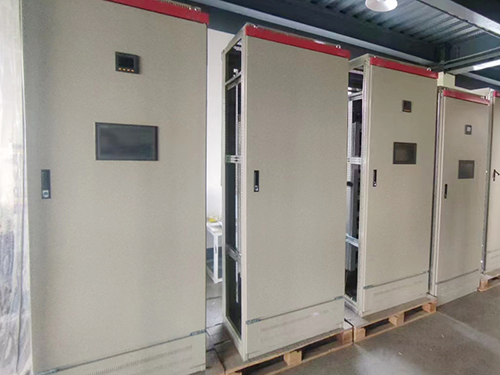SURVIVAL THROUGH QUALITY
PRODUCT CENTER
-
Pulse dust collector
-
Mine dust collector
-
Boiler dust collector
-
Metallurgical dust collector
-
Carbon plant dust collector
-
Chemical dust collector
-
Rubber dust collector
-
Woodworking dust collector
-
Single machine dust collector
-
Static electricity Dust collector
-
Cyclone dust collector
-
Wet dust collector
-
Filter cartridge dust collector
-
Insert valve (gate valve)
-
Ventilation butterfly valve (cold air valve)
-
Spiral conveyor (auger)
-
Scraper conveyor
-
Dust humidifier
-
Bucket elevator
-
Ash discharge valve
-
Material Handling Equipment
-
Wet scrubber
-
Dust collector
-
Dust removal filter bag
-
Dust removal bag cage
-
Polishing platform
-
Waste gas treatment equipment
-
Electric control cabinet
-
Fan
-
Smoke welding machine
-
Liquid level switch
-
Dust removal filter element
-
Aeration cushion
-
Sweeper
-
Dust suppression device
-
Solenoid valve

Electric control cabinet
The electrical control cabinet is a device that assembles switchgear, measuring instruments, protective appliances, and auxiliary equipment into enclosed or semi enclosed metal cabinets or screens according to electrical wiring requirements. Its layout should meet the requirements of normal operation of the power system, be easy to maintain, and not endanger the safety of personnel and surrounding equipment. During normal operation, the circuit can be connected or disconnected using manual or automatic switches. When there is a malfunction or abnormal operation, use protective appliances to cut off the circuit or give an alarm. By using measuring instruments, various parameters during operation can be displayed, and certain electrical parameters can also be adjusted to prompt or signal deviations from normal working conditions. Commonly used in various power generation, distribution, and substations.
Maintenance and upkeep
1. Disconnect the power supply, check if the rack of the electrical control cabinet is reliably grounded, and ensure that the grounding resistance does not exceed 4 Ω.
2. There are different types of voltage on the electrical control cabinet (DC 110V; AC single-phase 220V; three-phase AC), and the circuit must be distinguished during maintenance to prevent short circuit accidents.
3. All electrical switches on the electrical control cabinet should be flexible and reliable in operation, without significant noise. The connection wire joints and terminals should not be loose, and the steel wire at the connection wire joints of the moving contacts should not be broken.
4. Use a soft brush or hair dryer to remove dust from the screen board plug-in and all electromagnetic switch components, and check the status and contact of the electrical switch contacts inside the electrical control cabinet, the insulation of the coil surface, and the reliability of the mechanical components.
When replacing the fuse, the melting current should match the current of the circuit.

